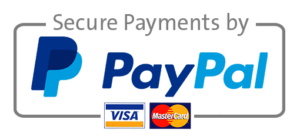Laws, Regulations, and Oversight
Develop a presentation, supported by 1015 slides, on compliance with current regulations affecting health informatics systems.
Note: The assessments in this course build upon the work you have completed in the previous assessments. Therefore, complete the assessments in the order in which they are presented.
The health care sector is widely known for being heavily regulated. It should, therefore, come as no surprise that health care informatics regulations are on the rise. Several new government initiatives have health care organizations scrambling to implement, update, or overhaul health information systems to meet government regulations.
It is vital that health care administrators stay current with the regulatory environment. Investment in health information systems alone can be very high, and systems that are noncompliant or incompatible with current regulations can add to these costs, sometimes costing more than the system itself.
This assessment provides an opportunity for you to develop a plan to comply with regulatory requirements associated with health informatics systems.
By successfully completing this assessment, you will demonstrate your proficiency in the following course competencies and assessment criteria:
· Competency 2: Differentiate among the roles and responsibilities of health care information management systems professionals within the organizational structures in which they work.
· Articulate the roles and responsibilities of health care managers in meeting current HIM regulatory obligations.
· Competency 3: Analyze the roles of governmental, regulatory, and professional agencies related to health care and their impact on clinical outcomes and financial performance.
· Identify regulatory agencies and laws that impact HIM.
· Develop a plan to assist a health care organization to comply with current HIM regulations.
· Identify agencies of particular relevance to a specific health care organization.
· Analyze the benefits of aligning with current HIM oversight organizations.
· Competency 6: Communicate effectively with diverse audiences, in an appropriate form and style, consistent with applicable organizational, professional, and scholarly standards.
· Present findings and conclusions clearly and coherently in an engaging an effective manner.
Resources
Suggested Resources
The resources provided here are optional. You may use other resources of your choice to prepare for this assessment; however, you will need to ensure that they are appropriate, credible, and valid. The MHA-FP5062 Health Care Delivery: New Environments in Health Informatics Library Guide can help direct your research, and the Supplemental Resources and Research Resources, both linked from the left navigation menu in your courseroom, provide additional resources to help support you.
EHR Utilization
The following articles provide useful insight into how organizations use EHR systems, in compliance with applicable current regulations, to improve care and meet business needs.
· Amoah, A. O., Amirfar, S., Sebek, K., Silfen, S. L., Singer, J., & Wang, J. J. (2015). Developing composite quality measures for EHR-enabled primary care practices in New York City. The Journal of Medical Practice Management: MPM, 30(4), 231?239.
· Discusses the estimation of clinical quality measures (QMs) from EHRs as an opportunity to accurately and quickly measure health care quality.
· Carter, J. (2016). Meaningful use. Journal of Palliative Medicine, 19(8), 895?895.
· A physician’s insightful and moving encounter with a palliative care patient.
· CMS, ONC release EHR incentive programs and 2015 edition health IT certification proposed rules. (2015). Medical Records Briefing, 30(7), 11?12.
· Discusses two proposed rules intended to improve the delivery of care and the patient experience and enhance electronic health information sharing.
· Glondys, B. A., & Kadlec, L. (2016). EHRs serving as the business and legal records of healthcare organizations (2016 update). Journal of AHIMA/American Health Information Management Association, 87(5), 42?44.
· A strategic look at using EHR systems to support the health care organization’s business and legal needs, as well as supporting patient care and decision making.
Effective Presentations
The following resources will help you create and deliver more effective presentations.
· Capella University Library: PowerPoint Presentations .
· Links to PowerPoint and other presentation software resources.
· Microsoft Office Software .
· Provides links to tip sheets, a tutorial, and additional online training resources.
· Guidelines for Effective PowerPoint Presentations [PPTX] .
· A presentation slide deck that serves as an example in itself, by utilizing all of the recommended guidelines mentioned.
· Creating a Presentation: A Guide to Writing and Speaking | Transcript .
· Covers the primary areas involved in creating effective audio-visual presentations. You can return to this resource throughout the process of creating your presentation to view the tutorial appropriate for you at each stage.
Writing Resources
You are encouraged to explore the following writing resources. You can use them to improve your writing skills and as source materials for seeking answers to specific questions.
· APA Module .









Recent Comments